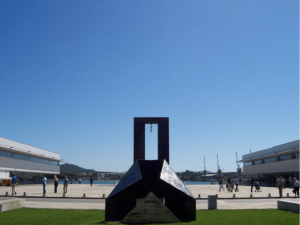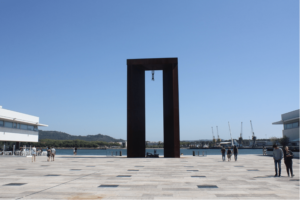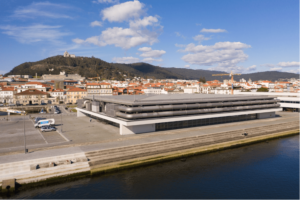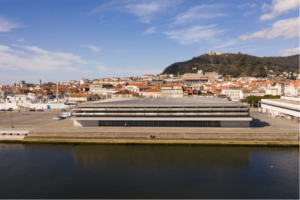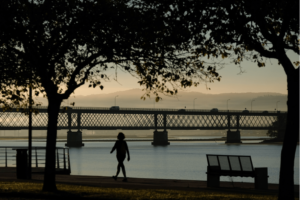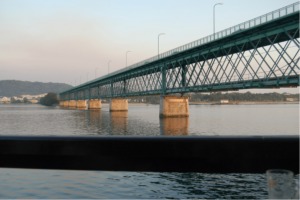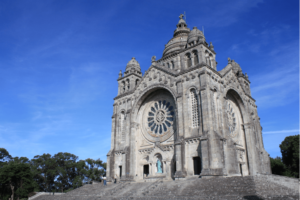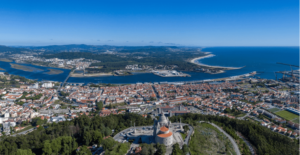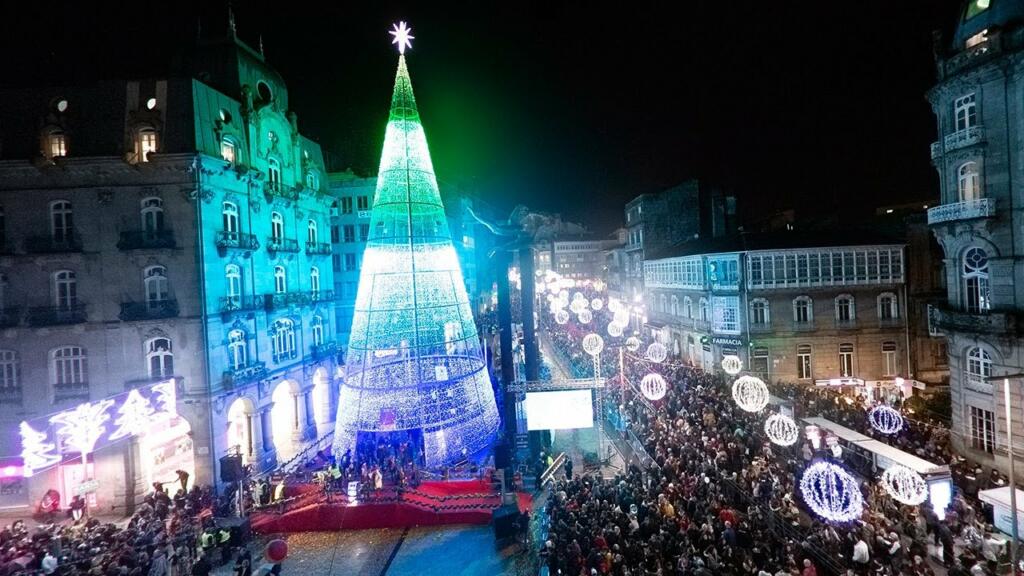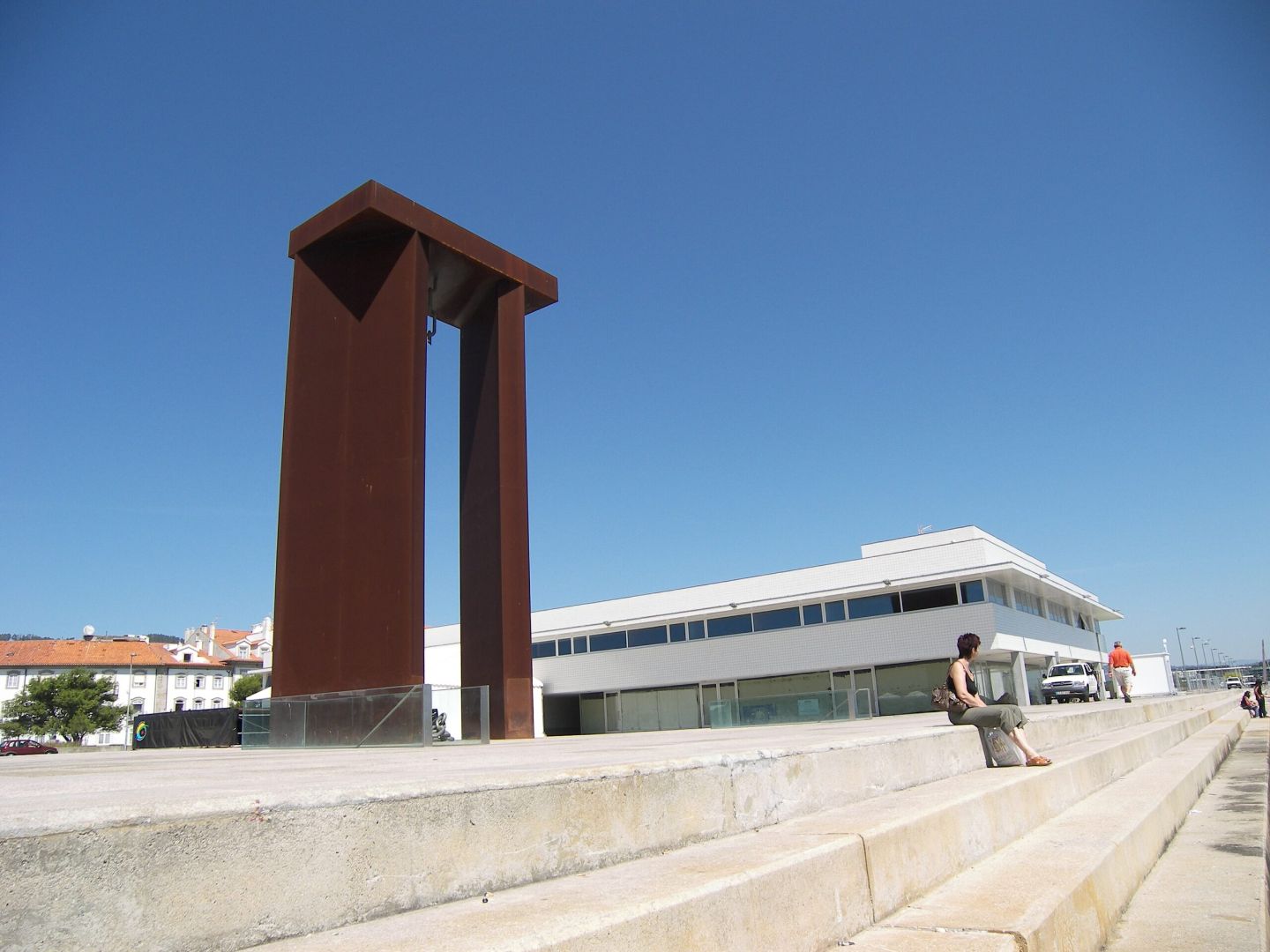
Architecture Route in Viana do Castelo
Viana do Castelo is rich in contemporary and modern architecture.
There are several places around the city that feature innovative and excellent architectural details.
For lovers of contemporary and modern architecture, Viana do Castelo is the ideal destination for your next vacation in Portugal.
And so that you have your holidays in Viana do Castelo organized and know exactly the main tourist attractions of contemporary and modern architecture to visit in the city, we have prepared a complete itinerary for you.
In this itinerary, you will find all the details about each place and learn a little about the history of each one.
Read on to find out which places you can’t miss during your vacation.
In Viana do Castelo, you really have to visit:
Get to know more details about each of these places.
Liberty Square
It is no coincidence that Viana do Castelo is considered the “Mecca of Architecture”.
And Liberty Square is one of the greatest proofs that the city deserves this title.
In addition to the square itself presenting splendid architectural traits, the buildings built on the site also deserve a huge highlight for their architecture.
The person responsible for this fantastic work is the renowned architect Fernando Távora, considered by many people to be the “father” of the Porto School of Architecture. It was he who designed the entire project for Liberty Square and the two administrative buildings that surround it.
The two buildings house the departments of the Ministry of Finance, the Labor Court, the Employment Center and some commercial spaces.
The project began to be conceived in 1995, following a strategic plan to rehabilitate the Riverside Front of Viana do Castelo.
In addition to the excellent work of Fernando Távora, Liberty Square in Viana do Castelo has other buildings and architectural monuments that deserve to be appreciated firsthand.
Interestingly, one of these buildings is the city’s Tourist Office, which was designed by his son Bernardo Távora.
The Statue of Liberty, created by the sculptor José Rodrigues, is another monument worthy of enormous recognition. Inaugurated on April 25, 1999, this monument is a tribute to all the Portuguese who fought for the end of the Salazar dictatorship.
It measures 16 meters in height and has a replica of chains accompanying the work, as a symbol of the lack of freedom that reigned in Portugal before 1974.
In addition to the chains, the Statue of Liberty has 40 jets of water to symbolize the 40 parishes that existed in the municipality of Viana do Castelo before the last reform of the parishes.
In total, the entire area of Liberty Square has 12,130 square meters of pure modern and contemporary architecture.
In addition to the architectural highlights, Liberty Square offers a panoramic view of the main street and the temple of Saint Lucia.
Municipal Library
Close to Liberty Square, in the riverside area, is the Municipal Library of Viana do Castelo.
This building was designed by renowned architect Siza Vieira, who was the first Portuguese to receive a Pritzke Prize, one of the highest international architecture awards.
In this work, Size Vieira designed an elegant, sophisticated and simple building, with windows facing the Lima River that provide a beautiful view.
The Municipal Library of Viana do Castelo has two floors and was built in white concrete. The base of the structure was made of granite and the main structure was made of iron.
It has a total area of 3130 square meters and a central external area with openings that allow you to see the Lima River.
It was inaugurated in 2008 and has an “L” shaped floor plan.
As referred by the official website of the Municipal Library of Viana do Castelo, “the orthogonality in plan and elevation characterize the project”.
For all its unique architectural features, the Municipal Library is one of the must-see places to visit during your holidays in Viana do Castelo.
Cultural Center
Another mandatory stop for lovers of contemporary and modern architecture is the Cultural Center of Viana do Castelo.
The building stands out for its parallelepiped volume that rises from the ground and for the long glass panels that allow a total view of the exterior from the interior of the space.
It was also designed by a renowned Portuguese architect: Eduardo Souto Moura.
Like Siza Vieira, Eduardo Souto Moura also won a Pritzke Prize in 2011.
For the architect, the concept developed for the Cultural Center of Viana do Castelo is based on a concrete table with 4 pillars. As noted by the famous architect Jorge Figueira, “the idea of the ‘table’ means that the lower plane is ‘transparent’, and the upper one can be ‘overloaded’. The same was mentioned by Souto Moura in the Descriptive Memory, in which he stated that “in this way it was possible to create a relationship of transparency between all sides of the pavilion”.
Another peculiar feature of this project by Souto Moura is the fact that the structure’s equipment has not been hidden, which ends up resulting in a building with a low-tech and arty profile.
If you like projects that have followed the architectural trends of the last twenty years, the Cultural Center is another place that you have to add to your holiday itinerary in Viana do Castelo.
Ponte Eiffel
It is the symbol of Iron architecture in Portugal.
The Ponte Eiffel is a project by the French engineer Gustave Eiffel that connects the two banks of the Lima River and the city of Viana do Castelo to the village of Darque.
This project, designed by the same engineer as the Eiffel Tower in Paris, is a historic bridge, not only in the region, but for the whole country, as it was the first road-rail bridge with two superimposed decks built in Portugal.
The inauguration of this project dates back to the distant year of 1878. But, clearly, it has already been renovated over the last few years to continue to have the updated and necessary infrastructure for traffic circulation.
Its construction was motivated by reasons of logistics in the transport of goods, since in the 19th century this transport was carried out over a very rudimentary bridge or by river transport. Therefore, as a way to ensure a safer and more peaceful way of transporting goods, the Ponte Eiffel project was started.
In total, the bridge has a length of 645 meters and is made up of two metal decks. The upper deck is road and the lower deck is rail, both being divided by 10 continuous sections of straight beams with multiple hinges.
On the upper deck there are two walkways, so it is possible to take a walk across the bridge and enjoy the beautiful view of the Lima River at the same time.
Anyone who has walked across the Ponte Eiffel in Viana do Castelo claims that this is “a magnificent work of engineering”, “identical to the style of the Eiffel Tower in Paris” and that “the view is beautiful”, according to reviews published on Trip Advisor.
We are therefore talking about yet another must-visit place during your holidays in Viana do Castelo.
Santa Luzia Sanctuary
The last place on our route through Viana do Castelo, focused on elements of contemporary and modern architecture, is the Santa Luzia Sanctuary.
It was designed by architects Miguel Ventura Terra and Miguel Nogueira Júnior and has influences from neo-romantic, neo-gothic and byzantine styles.
The Byzantine style, for example, inspired the building’s floor plan, which is centered on a Greek cross.
In turn, the neo-romantic style is expressed in the dome of the sanctuary and in the small domes that complete the building’s towers.
The neo-Gothic style is present in the rose windows that adorn the church’s stained glass windows. A very interesting curiosity that few people know is that these rose windows are the largest in the Iberian Peninsula.
Miguel Ventura Terra and Miguel Nogueira Júnior also had the help of the sculptor Emídio Lima in the development of the altars, which were made from marble and granite. The pulpits with wavy lines designed by the architect Miguel Nogueira were also in charge of the sculptor Emídio.
In turn, Manuel Pereira da Silva also helped the pair of architects with the frescoes that surround the apse of the chancel and the dome.
A team effort that resulted in one of the most beautiful sanctuaries in all of Europe, quite similar to the famous Sacré Coeur Sanctuary in Paris.
In addition to the beauty of the Santa Luzia Sanctuary, its view is also highlighted. This is because, due to its privileged location, the Santa Luzia Sanctuary offers its visitors a panoramic view over the city of Viana do Castelo, the Lima River and the Atlantic Ocean.
But, in addition to the Santa Luzia Sanctuary, there are many other religious places in the city that deserve to be visited by you. In our route of churches in Viana do Castelo, you can find out about the entire religious route in the area and more details about each place.
For architecture lovers who want to explore not only the architectural works of Viana do Castelo, but also the surrounding area, we have prepared a route of modern and contemporary architecture in Alto Minho that will help you discover the charms of other nearby cities, such as Ponte de Lima, Caminha, Vila Nova de Cerveira, Arcos de Valdevez or Paredes de Coura.
There is no shortage of sights to visit in Viana do Castelo and its surroundings. It is, without a doubt, a fantastic area to enjoy holidays and walk around.
And if you feel like visiting Viana do Castelo, don’t put off planning your next vacation any longer. Make your reservation at AP Dona Aninhas and visit this wonderful city this year.

